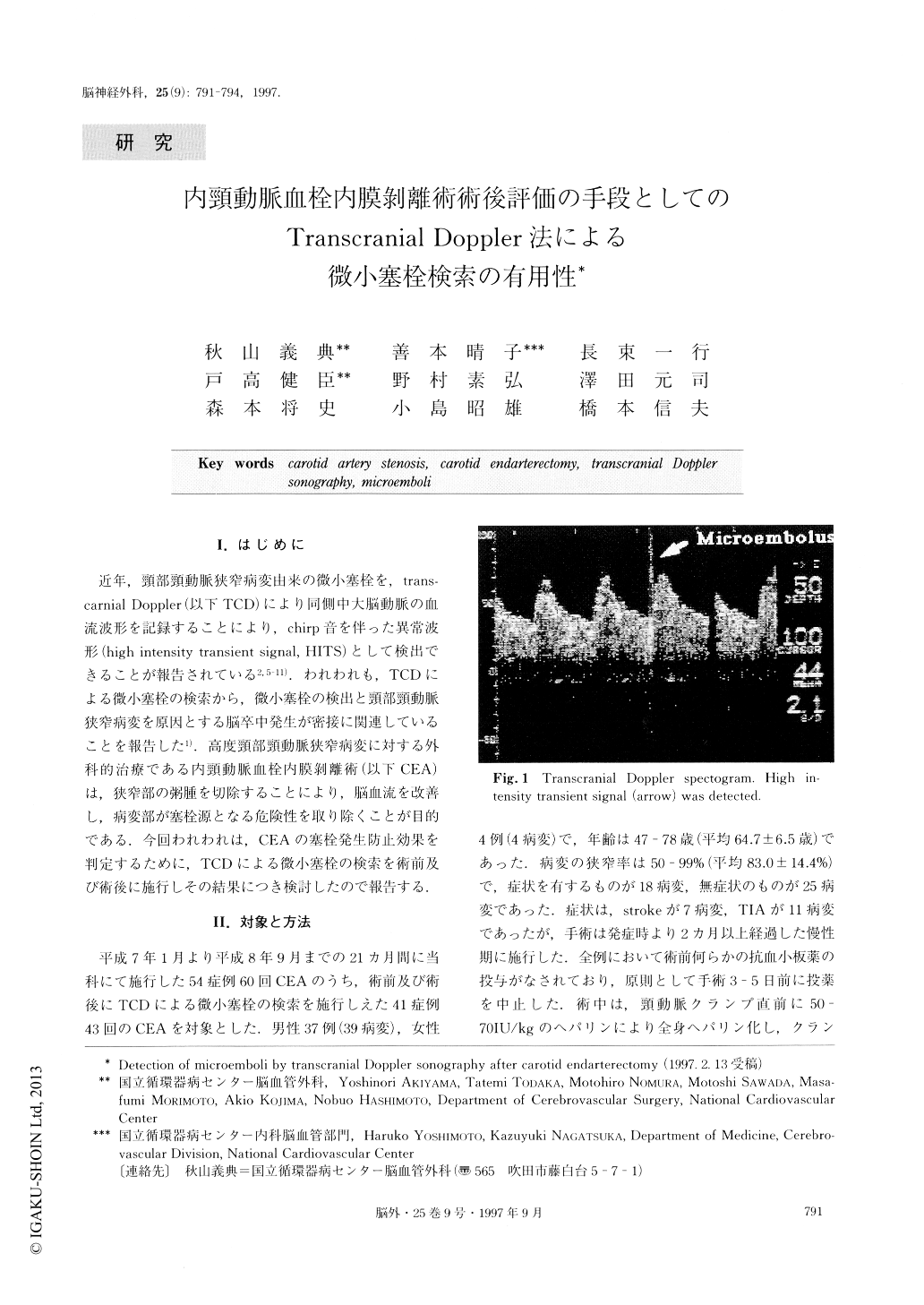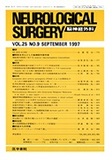Japanese
English
- 有料閲覧
- Abstract 文献概要
- 1ページ目 Look Inside
I.はじめに
近年,頸部頸動脈狭窄病変由来の微小塞栓を,trans—carnial Doppler(以下TCD)により同側中大脳動脈の血流波形を記録することにより,chirp音を伴った異常波形(high intensity transient signat, HITS)として検出できることが報告されている2,5-11).われわれも,TCDによる微小塞栓の検索から,微小塞栓の検出と頸部頸動脈狭窄病変を原因とする脳卒中発生が密接に関連していることを報告した1).高度頸部頸動脈狭窄病変に対する外科的治療である内頸動脈血栓内膜剥離術(以下CEA)は,狭窄部の粥腫を切除することにより,脳血流を改善し,病変部が塞栓源となる危険性を取り除くことが目的である.今回われわれは,CEAの塞栓発生防止効果を判定するために,TCDによる微小塞栓の検索を術前及び術後に施行しその結果につき検討したので報告する.
Transcranial Doppler sonography (TCD), a non-in-vasive monitoring technique, has potential for detecting microemboli caused by the extracranial internal carotidartery. Many previous reports have shown that TCD-detected microemboli may be a risk factor for stroke. The main purpose of this study is to verify whether microemboli cease after carotid endarterectomy (CEA). TCD monitoring was performed in 43 cases before and after CEA. TCD monitoring was carried out for an hour at the ipsilateral middle cerebral artery of each case using a 2-MHz pulse-wave transcranial Doppler device, and high intensity transient signals were counted as microemboli. Microemboli were detected preoperatively in 10 cases (23.3%). Microemboli were not detected in any case immediately after CEA, in either the subacute stage (from 14 to 21 days after CEA) or in the chronic stage (more than 3 months af-ter CEA). In the acute stage (from 3 to 7 days after CEA), microemboli were detected in three cases (7.0%). The rate of TCD-detected microemboli was al-ways significantly reduced after CEA. TCD monitoring can be helpful in assessing the effect of CEA for pre-vention of stroke by removing the suspected source of microemboli.

Copyright © 1997, Igaku-Shoin Ltd. All rights reserved.


